

How did Israel split in two and fall to the Assyrians (722 BC) and the Babylonians (586 BC)? Kings explains how all of this happened. These long historical books take us from the final days of King David (around 962 BC) to the horror of the Exile (in 586 BC). They record the death of David, the rise and fall of King Solomon, and the split of the kingdom under Jeroboam (in the north) and Rehoboam (in the south). Subsequently, the books record the 37 kings that ruled in some capacity after Jeroboam and Rehoboam split the kingdom.
Kings is crucial history in understanding the Major Prophets and Minor Prophets. Without this knowledge, the prophets become difficult to place in context. Kings brings together the OT in much the same way as the book of Acts brings together the NT. It gives context for the prophets, as Acts gives context for the epistles. Therefore, to study the prophets, it’s essential to study Kings.

The most likely candidate for the authorship of Kings is the prophet Jeremiah. Ancient Jewish tradition states, “Jeremiah wrote the book which bears his name, the Book of Kings, and Lamentations” (Baba Bathra 15a). Furthermore, Kings “has much in common with Isaiah and Jeremiah in theological perspective, language and purpose.”[1] Archer writes, “Since the author speaks from a consistently prophetic standpoint and is a man of great literary ability, it is possible that Jeremiah may have composed everything except the final chapter.”[2] Hill and Walton write, “This association may have been based on the similarities between Jeremiah 53 and 2 Kings 24-25.”[3] Moreover, Jeremiah is never mentioned in these two books—even when king Josiah is written about—which could point to prophetic authorship. However, the final chapter occurs in Babylon—not Egypt (where Jeremiah died). The author borrowed three entire chapters word for word (2 Kings 18-20) from the book of Isaiah (Isa. 36-39). So, this would show that the author had dependence on the canonical books.
OBJECTION #1. Was Jeremiah too old to write the book? No, Jeremiah was but a “youth” when he received his calling (Jer. 1:6-7; 627 BC), so this could account for him living long enough to finish the books (562 BC).
OBJECTION #2. If Jeremiah was exiled (Jer. 43:5-7; 586 BC), how could he write about Jehoiachin’s reign? Jeremiah ends his book by commenting on the historical events of Jehoiachin’s reign (Jer. 52:31-34).
OBJECTION #3. How could one author write four centuries of history? The history of Kings stretches from 970 BC (David) to at least 562 BC (Jehoiachin). Thus, the author could not have been alive for this entire time. Instead, he most likely used historical sources to compile his history.
This was a common practice for ancient historians. The great Greek historian Herodotus “carefully combined diverse sources into a coherent whole.”[4] Moreover, “ancient historians often used diverse types of material to present a series of scenes that create the author’s main arguments. Seen this way, what some scholars consider evidence for two or more editors can actually be viewed as part of a carefully structured whole.”[5]
Throughout Kings, the author refers to these sources, such as the Book of the Acts of Solomon (1 Kings 11:41), the Book of the Chronicles of the Kings of Israel (1 Kings 14:19; mentioned 17x), and the Book of the Chronicles of the Kings of Judah (1 Kings 15:23; mentioned 15x). These books were non-scriptural texts, but they were probably historical texts kept by the royal scribes (2 Sam. 8:16; 20:24-25). At the very least, Wiseman argues that it is a defensible statement that Kings is a “unified work and… probably and largely the work of one historian.”[6]
Even critical scholars agree. Critics like Martin Noth[7] and Gerhard von Rad[8] argue for the essential unity of the books—though under the agency of a “Deuteronomistic” author(s). Indeed, despite his conclusions about multiple editors, Skinner warns that the two editors “are so much alike in their principles and their cast of thought that it is not always possible to assign an editorial insertion with confidence to the one rather than to the other.”[9] To rephrase this statement with a modicum of common sense, this is the same as saying that it’s impossible to tell if it’s two authors or one. Following Ockham’s Razor, we favor the view that only one author wrote the book—most likely the prophet Jeremiah.
The history recorded in Kings regularly interfaces with secular sources. Consider just a few examples of people confirmed from extrabiblical history from Wiseman:[10]
Omri and Ahab (kings of Israel). The Mesha Inscription (or Moabite Stone) dates to 830 BC, and it mentions the evil King Omri (1 Kin. 16) and his evil son, King Ahab (1 Kin. 16-22).
Ahab (king of Israel) fought in the battle of Qarqar. The Assyrians record that this occurred in 853 BC.
Jehu (king of Israel). The Black Obelisk from Kalhu states, ‘Jehu of the Omri dynasty.” It dates to 841 BC.
Tiglath-pileser III (king of Assyria). He reigned from 745-727 BC. In his annals, he records tribute given from Samaria (738 BC, 2 Kin. 15:19ff) and Pekah (731 BC).
Shalmaneser V (the Assyrian king who captured Samaria). The Babylonian Chronicle records this king attacking Samaria in a siege (723-722 BC, 2 Kin. 17:3-4).
Sargon II (the Assyrian king). He doesn’t appear in Kings, but his records claim that he conquered Samaria and took the Israelites into exile in 722 BC (Isa. 20:1; 2 Kin. 17:6).
Sennacherib (king of Assyria). In 701 BC, Sennacherib records that he “shut up Hezekiah the Judean (Hazaqia yaudāia)… like a caged bird within his royal city (Jerusalem).” He also records that Hezekiah paid him tribute (2 Kin. 19:8).
Manasseh (tributary of Assyria). Assyrians record him as “Manasseh, king of Judah” (680-669 BC).
The Babylonian Chronicle (625-595 BC). These record the fall of Nineveh (612 BC), the battle of Carchemish (605 BC), Nebuchadnezzar’s attacks on Jerusalem (605 BC), and Jehoiachin—the king of Judah (2 Kin. 24:8).
What should we look for as we read through Kings? Several themes are prominent:
First, Kings records the history from the death of David to the fall of Jerusalem (971-562 BC). How did the kingdom go from being God’s chosen nation to a heap of rubble? Kings explains how the leaders constantly turned away from God. Moreover, after the Exile, several key features change in Israel:
New language: Aramaic
New name: Judeans = Jews
New theology: polytheism is gone
New way of life: more urban—less agricultural
New worship: the development of synagogues
Second, Kings explains the turmoil of the kings, prophets, and priests. Archer writes, “The theme of these two books was to demonstrate on the basis of Israel’s history that the welfare of the nation ultimately depended upon the sincerity of its faithfulness to the covenant with Yahweh.”[11] Ultimately, where these men failed, Jesus would succeed—being the perfect King, Prophet, and Priest.
Third, Kings give us two perspectives on history: human and divine. From the human perspective, it looks like free moral agents are carrying out their business, but from the divine perspective, we see that God’s plan is being carried out. Thus we’ll read that a king killed another king out of his own free will, but then we’ll read, “This fulfilled the word of the Lord.”
Fourth, Kings give us a picture of a divided nation. Israel had 45 kings in its history, but 42 of these kings reigned over a divided kingdom. Sometimes when nations split, they will come back together. Not so with Israel. Saul, David, and Solomon were the only kings to reign over a united monarchy.
The chronology of the kings is complicated by the fact that 41 kings are involved—split almost immediately between the northern kingdom of Israel and the southern kingdom of Judah. However, the key to grasping the chronologies is the fact that there were different practices between Judah and Israel.
In his book, Mysterious Numbers of the Hebrew Kings (1951), Edwin R. Thiele argues that there are many reasons why the chronologies of Judah and Israel aren’t exactly aligned. His work is still considered reliable today.
First, Judah and Israel counted the beginning of the king’s reign on different years. In Israel, they counted the first year when the king immediately began to reign on the first day of his reign. Even if he took office in the eleventh month of the year, this would count as a full year. This is called the “regnal-year system.”
In Judah, they counted the first full year when the king took office on the first day of the calendar year. This is called the “accession-year system.”
Second, Judah and Israel used calendars that were six months apart. According to Thiele, this further complicates synchronizing the calendars between the two nations. Moreover, during a period of time, the two calendars aligned with one another. So, depending on the period of history, the calendars could be aligned with one another or six months apart.
Third, both nations used coregencies in their measurements. A coregency means that a son would rule as a legitimate king alongside his father, and both would be considered kings.
Fourth, not everything is confusing in the synchronizing of the dates. A fixed date for the Kings is the battle of Qarqar in 853 BC. This date comes from Assyrian records, and it helps sequence the other events in Kings, moving backward and forward from that fixed date.
Chronology of the Kings | |
Judah | Israel |
Rehoboam (930-913) | Jeroboam I (930-909) |
Abijah (913-910) |
|
Asa (910-869) | Nadab (909-908) Baasha (908-885) Elah (885-884) Zimri (884) Tibni (884-880) Civil Unrest (884-880) Omri (880-874) |
Coregency (872-869) | Ahab (874-853) |
Jehoshaphat (869-848) | Ahaziah (853-852) |
Coregency (853-848) | Joram (852-841) |
Jehoram (848-841) |
|
Ahaziah (841) | Jehu (841-814) |
Athaliah (841-835) |
|
Joash (835-796) | Jehoahaz (814-798) |
| Jehoash (798-782) |
Amaziah (796-767) |
|
Coregency (792-767) | Coregency (793-782) Jeroboam II (782-753) |
Azariah/Uzziah (767-740) | Zechariah (753-752) Shallum (752) |
Coregency (750-740) | Menahem (752-742) Pekahiah (742-740) |
Jotham (740-731) | Pekah (740-732) |
Coregency (735-731) Ahaz (731-715) Hezekiah (715-687) Coregency (697-687) Manasseh (687-642) Amon (642-640) Josiah (640-609) Jehoahaz (609) Jehoiakim (609-598) Jehoiachin (598-597) Zedekiah (597-587) | Hoshea (732-722) |
Several nations appear throughout the Kings, frequently making threats or war with Judah and Israel. The reader would be wise to understand these nations and use this as a resource throughout the reading of this book.
Egypt. The Egyptians attacked Israel immediately after Solomon. Pharaoh Shishak invaded Jerusaelm in 925 BC under the reign of Rehoboam (1 Kin. 14:25-27). Later in 609 BC, Pharaoh Neco aligned with Assyria to battle Babylon (2 Kin. 23:29). Neco went on to kill Josiah—the last righteous king in Judah (2 Kin. 23:29-30).
Aram (Syria). They attacked Israel in the 9th century BC. King Ben-Hadad I (880-840 BC) aligned with King Asa of Judah to fight against King Baasha of Israel (1 Kin. 15:9-22). Years later, Judah and Israel aligned to fight Syria (1 Kin. 22:1-4). Assyria put the Syrian capital of Damascus under a siege, and eventually, Assyria conquered Syria, forcing them to pay tribute.
Assyria. This was a superpower that eventually invaded and conquered the northern kingdom of Israel in 722 BC. House writes, “Assyria probably was the fiercest, most cruel, and most oppressive foreign power ever to threaten Israel and Judah.”[12] The Assyrians nearly conquered Judah in 701 BC, but God rescued the people of Judah through divine intervention (2 Kin. 18:17-19:37). Tiglath-Pileser III (745-727 BC), Shalmaneser V (727-722 BC), and Sennacherib (704-681 BC) were all infamous Assyrian kings.
Babylon. This was the ultimate superpower of the ancient world. They conquered Assyria (626 BC), Egypt (605 BC; 2 Kin. 23:31-35), and Judah in 586 BC.
931 BC. The Northern and Southern kingdoms split. Israel was in the north and split apart with Jeroboam, and Judah was in the south with King Rehoboam.
722 BC. The Assyrians conquered Israel.
586 BC. The Babylonians conquered Judah.
(1 Kings 1-6) Solomon takes the throne, and God gives him wisdom. Make sure to summarize at least two of these chapters, rather than reading through all of this material.
(1 Kings 7-12) Solomon’s downfall.
(1 Kings 13-16) For this teaching, split up into groups and have the groups write down what happens to each king in the story.
(1 Kings 17-18) Showdown between Elijah and false prophets—God and Baal.
(1 Kings 19-22) Elijah recuperates, and we see the death of Ahab—an evil king.
(2 Kings 1-3) Elisha takes over. Make sure to summarize large swathes of Scripture in this teaching.
(2 Kings 4-5) The widow and Naaman. The contrast between these two figures is clear: The widow has nothing, but needs help; Naaman has everything, but still needs help!
(2 Kings 6-8) Warfare and death of Ben-Hadad.
(2 Kings 9-12) Split up into groups to summarize the stories of these various kings. Fill in notes for the test at the end of the study.
(2 Kings 13-16) Split up into groups to summarize the stories of these various kings. Fill in notes for the test at the end of the study.
(2 Kings 17-20) Split up into groups to summarize the stories of these various kings. Fill in notes for the test at the end of the study.
(2 Kings 21-25) Split up into groups to summarize the stories of these various kings. Fill in notes for the test at the end of the study.
R. D. Patterson and Hermann J. Austel, “1, 2 Kings,” in The Expositor’s Bible Commentary: 1 & 2 Kings, 1 & 2 Chronicles, Ezra, Nehemiah, Esther, Job, ed. Frank E. Gaebelein, vol. 4 (Grand Rapids, MI: Zondervan Publishing House, 1988).
Patterson and Austel’s commentary is a solid introductory commentary on Kings.
Donald J. Wiseman, 1 and 2 Kings: An Introduction and Commentary, vol. 9, Tyndale Old Testament Commentaries (Downers Grove, IL: InterVarsity Press, 1993).
Wiseman’s commentary was the best commentary we read on Kings. He had good historical and interpretive insight. We would suggest starting here.
Paul R. House, 1, 2 Kings, vol. 8, The New American Commentary (Nashville: Broadman & Holman Publishers, 1995).
While the NAC is typically our favorite commentary, we thought Wiseman’s was better.
[1] Donald J. Wiseman, 1 and 2 Kings: An Introduction and Commentary, vol. 9, Tyndale Old Testament Commentaries (Downers Grove, IL: InterVarsity Press, 1993), 56.
[2] Gleason Archer Jr., A Survey of Old Testament Introduction, 3rd. ed. (Chicago: Moody Press, 1994), 319.
[3] Andrew Hill and John Walton, A Survey of Old Testament Introduction (2nd ed., Grand Rapids, MI. Zondervan, 2000).
[4] Paul R. House, 1, 2 Kings, vol. 8, The New American Commentary (Nashville: Broadman & Holman Publishers, 1995), 35-36.
[5] Paul R. House, 1, 2 Kings, vol. 8, The New American Commentary (Nashville: Broadman & Holman Publishers, 1995), 39.
[6] Donald J. Wiseman, 1 and 2 Kings: An Introduction and Commentary, vol. 9, Tyndale Old Testament Commentaries (Downers Grove, IL: InterVarsity Press, 1993), 16.
[7] Martin Noth, The Deuteronomistic History (Sheffield: JSOTSupp 15, 1981), pp. 75ff.
[8] Gerhard von Rad, Studies in Deuteronomy (London: SCM Press, 1953), pp. 90-91.
[9] J. Skinner, 1, 2 Kings (CB. Revised editon. Edinburgh: T & T Clark, 1904), 22.
[10] Donald J. Wiseman, 1 and 2 Kings: An Introduction and Commentary, vol. 9, Tyndale Old Testament Commentaries (Downers Grove, IL: InterVarsity Press, 1993), 36.
[11] Gleason Archer Jr., A Survey of Old Testament Introduction, 3rd. ed. (Chicago: Moody Press, 1994), 317.
[12] Paul R. House, 1, 2 Kings, vol. 8, The New American Commentary (Nashville: Broadman & Holman Publishers, 1995), 45.

James earned a Master’s degree in Theological Studies from Trinity Evangelical Divinity School, graduating magna cum laude. He is the founder of Evidence Unseen and the author of several books. James enjoys serving as a pastor at Dwell Community Church in Columbus, Ohio, where he lives with his wife and their two sons.
